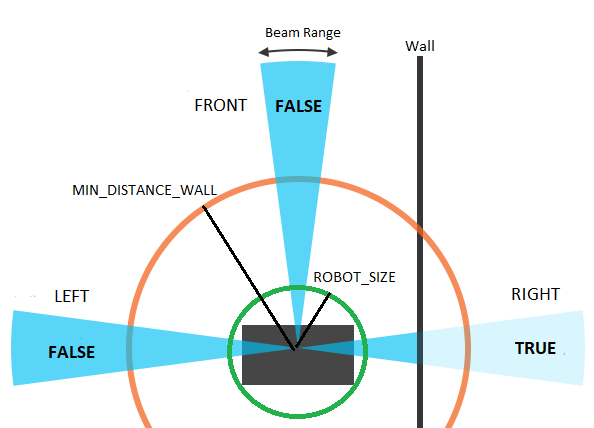Embedded Motion Control 2015 Group 3/Scan
Scan
This page is part of the EMC03 CST-wiki.
In order to solve the maze successfully, the robot needs to be able to drive autonomously. One type of data that is available is the laser range finder data. The PICO robot has a 270 degrees view, with approximately thousand beams.
Potential field
Avoidance collision
The first level of saftey is provided by the potential field algoritm. Its resultant vector will always point towards the direction with the most room and therefore it is sufficient as first layer. However, avoidance collision is one of the top priorities since if Pico bumps into the wall the attempt of solving the maze is over. Another safety layer has been implemented to prevent the robot hitting walls or corners. The distance to the wals is continuosly measured and compared to a set safety margin. If the distance of multiple coextensive beams is smaller than this fixed parameter the robot will move in the oppositie direction.
Detection intersections
At this stage the basic skill of driving with the potential field based on LRF data is completed. Next, the different type of junctions and intersections must be recognized in order to solve the maze. Not only is recognition necassary for driving through the maze, it is also a important part of mapping the maze, see Mapping.
Since the maze is axis alligned there are three possibilites:
1. Intersection 2. T-junction 3. Open space
As an example consider an intersection, the left
